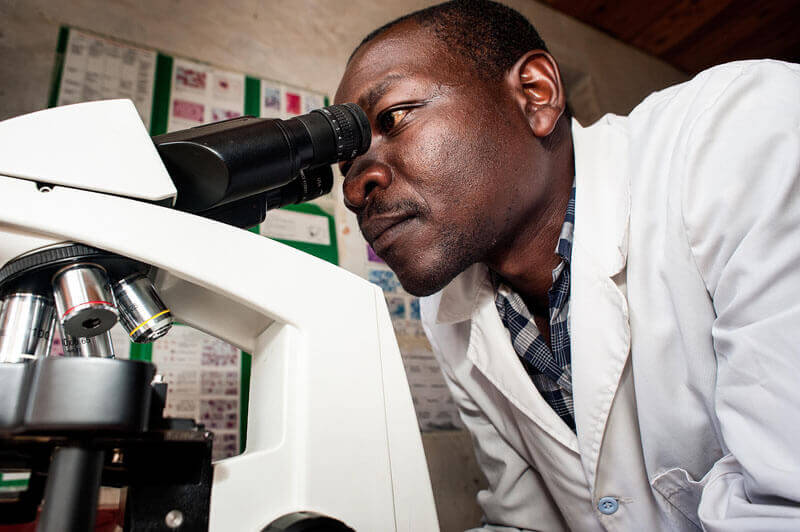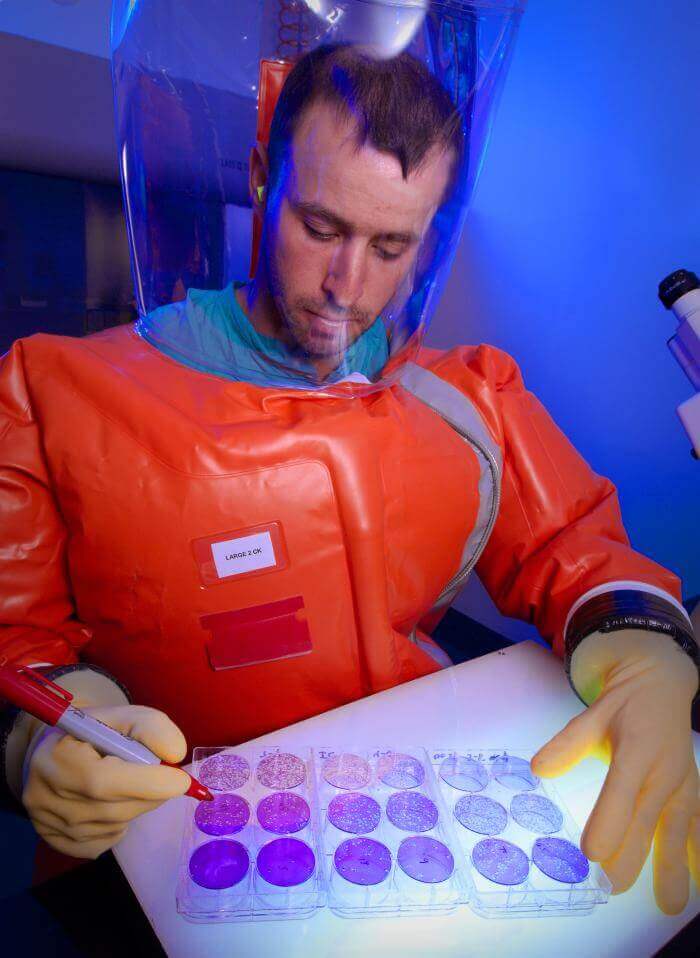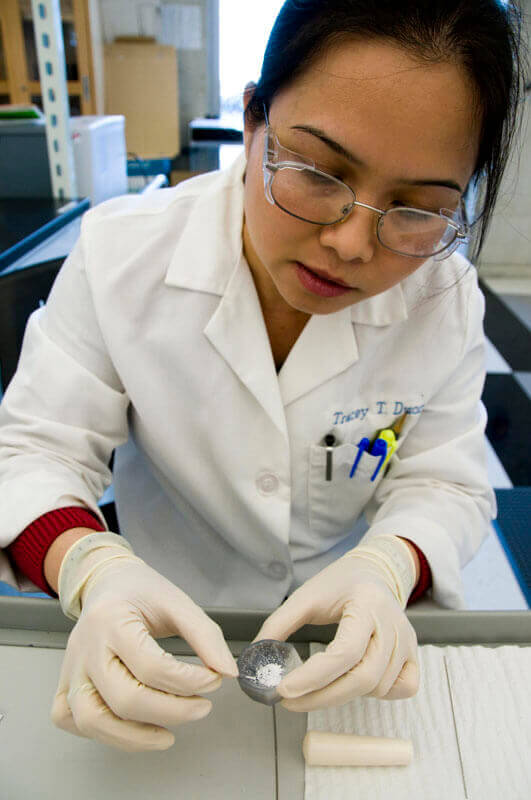Jenny HowellGHTC
Jenny Howell is a senior policy and advocacy associate at GHTC, leading the coalition's US Congressional advocacy.

On Monday the White House turned heads by releasing, for the first time since 2010, an on-time budget. Overall the White House presented a mixed outlook for global health research and development (R&D). At US$4 trillion, the President’s budget ignores the current budget caps and makes a clear case for Congress to do away with sequestration. While the overall federal budget request would provide a 6 percent increase in OVERALL funding for R&D—with a broader focus than global health—overall implications for global health R&D were mixed.
State Department and US Agency for International Development (USAID)
Although the White House’s overall request for the State, Foreign Operations, and Related Programs account—which funds activities at State and USAID—would increase by 8 percent, global health programs would see a slight 3 percent decrease compared to fiscal year (FY) 2015 levels. While this is a disappointing trend, not all accounts were treated equally. One significant cut was to the Global Fund to Fight AIDS, Tuberculosis and Malaria, which compared to FY2015 levels would drop from $1.35 billion to $1.1 billion. While disappointing, this cut was expected and continues to meet the US commitment to provide $1 for every $2 pledged by other donors for the FY2014 – FY2016 replenishment. We were very disappointed to see the White House continue to low ball the funding for tuberculosis (TB) and neglected tropical diseases, which would see a 19 percent and 14 percent cut, respectively. It will once again be up to our champions in Congress to protect funding for these already underfunded accounts. Nutrition, vulnerable children, and global health security (formerly listed under the line item “pandemic influenza and other emerging threats”) also would see significant decreases. Funding for malaria, HIV and AIDS, the President’s Emergency Plan for AIDS Relief (PEPFAR), and family planning would be essentially flat funded.
As mentioned earlier, not all accounts were treated equally, and GHTC is glad to see the President recognize the US commitment to ending preventable maternal and child deaths within a generation through an 8 percent increase to the maternal and child health budget line and an 18 percent increase to GAVI, the Vaccine Alliance.
Something new in this year’s budget was a request for $300 million for a new PEPFAR Impact Fund to help countries re-align their national HIV and AIDS programs to focus on high burden areas. Also included was $94 million for the Commodity Fund, one function of which is to fund HIV vaccine development and research for microbicides. The congressional budget justification (CBJ) showed strong continued support for the Global Development Lab, specifically highlighting the lab’s role in battling the Ebola outbreak. The budget also continues to list the promotion of research, development, and innovation as a top focus of the Administration’s Global Health Initiative.
It’s great to see strong commitments in language for global health R&D, but for long-term change to occur, we’ll need to see the Administration continue to back up its recognized priorities with the necessary investments.
US National Institutes of Health (NIH)

Under the President’s plan, the NIH would be funded at $31.3 billion, a 4 percent increase from FY2015 funding. According to an accompanying US Department of Health and Human Services (HHS) factsheet, NIH estimates that in FY2016 the agency can support a total of 35,447 research grants, including over 10,000 new awards. GHTC is glad to see this budget line continue to increase, albeit slower than we’d like.
Within NIH, the National Institute for of Allergy and Infectious Diseases would receive an almost 6 percent increase. Within this account, funding for emerging and infectious diseases, infectious and immunologic diseases, HIV and AIDS research, and research project grants would all receive significant increases. These accounts are critical for developing new tools in the fight against AIDS/HIV, TB, and malaria.
Funding for the National Center for Advancing Translational Sciences, the National Institute of Child Health and Human Development, and the Fogarty International Center would all see modest increases of 4 percent, 2 percent, and 3 percent, respectively. One of the major implications for the NIH budget is the President’s new Precision Medicine Initiative, which split across multiple agencies adds up to a request of $215 million ($130 million for the NIH).

US Centers for Disease Control and Prevention (CDC)
Under the President’s plan, the overall budget at the CDC would remain relatively the same with a slight (almost 2 percent) increase. Global health funding would fare quite well, particularly in a few of the areas GHTC tracks. At $448 million, funding for global health programs at the CDC would be $32 million above the FY2015 enacted level (which does not include the $30 million CDC received in additional Ebola funding for FY2015). We’re glad to see that the Administration’s request does not seem to penalize important programs based on additional emergency funding received last year. Within the CDC’s global health programs, the President included a $12 million increase to expand the Global Health Security Agenda, a $10 million increase to support global health capacity building, and a $10 million increase for the US commitment to polio eradication. The largest increase for global health R&D at the CDC was for the National Center for Emerging and Zoonotic Infectious Diseases, which would see an increase of over 70 percent (going from $405 million to $699 million). Nearly all of this additional funding would go towards the implementation of the National Strategy to Combat Antibiotic-Resistant Bacteria, which among other priorities, is working to accelerate basic research for new antibiotics, therapeutics, and vaccines.
US Food and Drug Administration (FDA)

Under the President’s budget, the FDA’s budget authority would grow by 6 percent, an increase of $147 million. GHTC is pleased to see the CBJ recognize the important role the FDA plays in global health R&D by highlighting the agency’s accomplishments in improving global health through international collaboration, research, and information sharing. Also highlighted was FDA’s role in the International Conference on Harmonization and the International Conference of Drug Regulatory Authorities.
GHTC is glad to see the Administration starting to build back up many of the basic research structures and baseline funds that were hit especially hard during sequestration. However, the development of life-saving new tools and technologies for vulnerable populations requires a whole-of-government approach which necessitates robust funding across all accounts involved in R&D. We’re pleased to see funding for many of these programs at the NIH, CDC, and FDA moving in the right direction, but are disappointed to see more of the status quo for USAID’s global health programs which play a vital role in ensuring new tools are developed and delivered to those who need them. We’ll now be looking to Congress to finish what the President started.